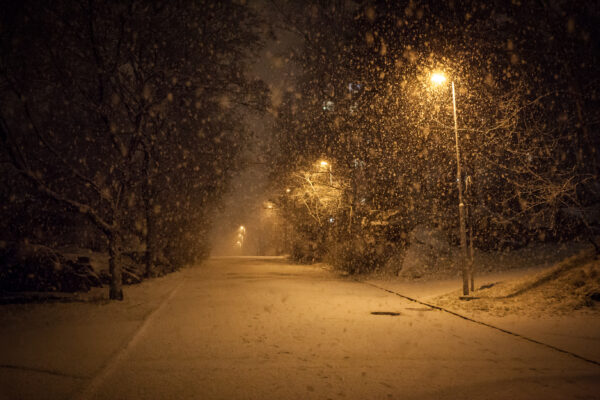
During winter, the chance of slip and fall injuries increases due largely to unfavorable weather conditions like snow, ice, sleet, or freezing rain. Combined with temperature fluctuations that can freeze, thaw, and refreeze wet surfaces daily, the risks for injury are even greater. Winter is the time of year when simply walking into a supermarket, restaurant, or shop, going into the office or warehouse to work, crossing a parking lot, or stepping on a neighbor’s front porch could result in an accident that lays you up weeks, months, or even longer.
Slip and fall accidents can lead to injuries ranging from minor bruises to severe fractures or head injuries, depending on the severity of the fall. Commercial and retail businesses, warehouses, facilities, and property owners can be subject to legal disputes and sued for negligence if they fail to maintain safe conditions or warn customers, employees, or visitors about potential hazards. Suppose you or a loved one is seriously hurt as a result of a slip-and-fall accident. In that case, you can seek compensation for medical expenses, lost wages, and pain and suffering through a personal injury claim or lawsuit.
Common Causes of Slip and Fall Incidents During Winter
The accumulation of snow on walkways, sidewalks, parking lots, and entryways to shops and stores can create extremely slippery surfaces that could lead to slip-and-fall injuries. Businesses that fail to promptly remove snow from walkways, stairs, and other surfaces can create hazardous conditions that increase the risk of their customers slipping and falling. Snow left to melt slowly during the day will refreeze overnight when temperatures drop, creating uneven surfaces and hidden hazards.
So too with ice left untreated during the winter. Ice can be particularly dangerous. Areas where snow melt has occurred or water has pooled after a freezing rain can create ice patches to form on sidewalks, parking lots, and entryways. It can build up under snow left on walkways. Black ice is especially difficult to see and extremely slippery, causing people to lose their footing and fall. Left untreated, black ice and patchy ice only increase the potential for individuals to slip and fall.
Other winter hazards include poorly maintained parking lots or walkways with cracks, potholes, and uneven surfaces left covered or filled with snow or ice that can pose tripping hazards and increase the risk of falls. Poor lighting in parking lots and entryways only adds to the problem, making it difficult for individuals to see icy patches or other hazards. Transition areas around entryways, where indoor surfaces meet outdoor surfaces, are prone to snow, melting snow, ice, and, especially, wet floors that can easily create slippery conditions that can catch people off guard and cause a slip and fall accident.
Practical Tips for Preventing Slip and Fall Accidents
Preventing slip and fall accidents during winter requires proactive measures to mitigate the hazards of snow, ice, and cold weather conditions. The goal for every type of business and property owner should be to prevent slips, trips, and falls by maintaining safe walking surfaces during winter weather conditions. Continuous monitoring and removal of snow and ice is important, especially before the business opens or start work, and periodically throughout the day, or during melting and refreezing occurrences.
Businesses, whether retail, offices, or other commercial spaces, should keep walkways clear of snow and ice at all times. Snow should be regularly shoveled or plowed and removed from sidewalks, parking lots, and building entrances. Rock salt, ice melt, or sand should be applied to slippery areas to improve traction. Individuals should be mindful of transition areas, too. Pay attention to surface changes when stepping from dry pavement to wet or slush patches or when going in or out of a building to avoid slipping.
Proper lighting should be maintained in parking lots and storefronts to ensure that all outdoor walkways, stairs, and entrances are well-lit to improve visibility. This is especially important during winter when daylight hours are limited. Businesses should also place non-slip mats or rugs in entrances and other high-foot traffic areas prone to moisture to provide additional traction.
Individuals can avoid injuries by taking precautionary measures during winter weather. Stay informed about weather conditions and always wear appropriate shoes for the conditions. Choose something with good traction, and avoid wearing shoes with smooth soles. Always use handrails when navigating stairs or inclines, if available, for added support and stability. Finally, be cautious when entering buildings and watch for wet or slippery floors near entrances.
When going out during winter, it’s important to remember the potential hazards of the ice and snow. Pay attention to common trouble spots like sidewalks, entryways, parking areas, and stairs where ice and snow can accumulate to avoid injury. However, if you are hurt due to a slip and fall accident by no fault of your own, missed work or lost wages, or have medical bills paid, call the law offices of Hardy, Wolf & Downing for a free consultation. For close to 50 years we have won substantial settlements and verdicts for our clients and we will fight for you to ensure you receive the compensation you deserve for your injuries.

